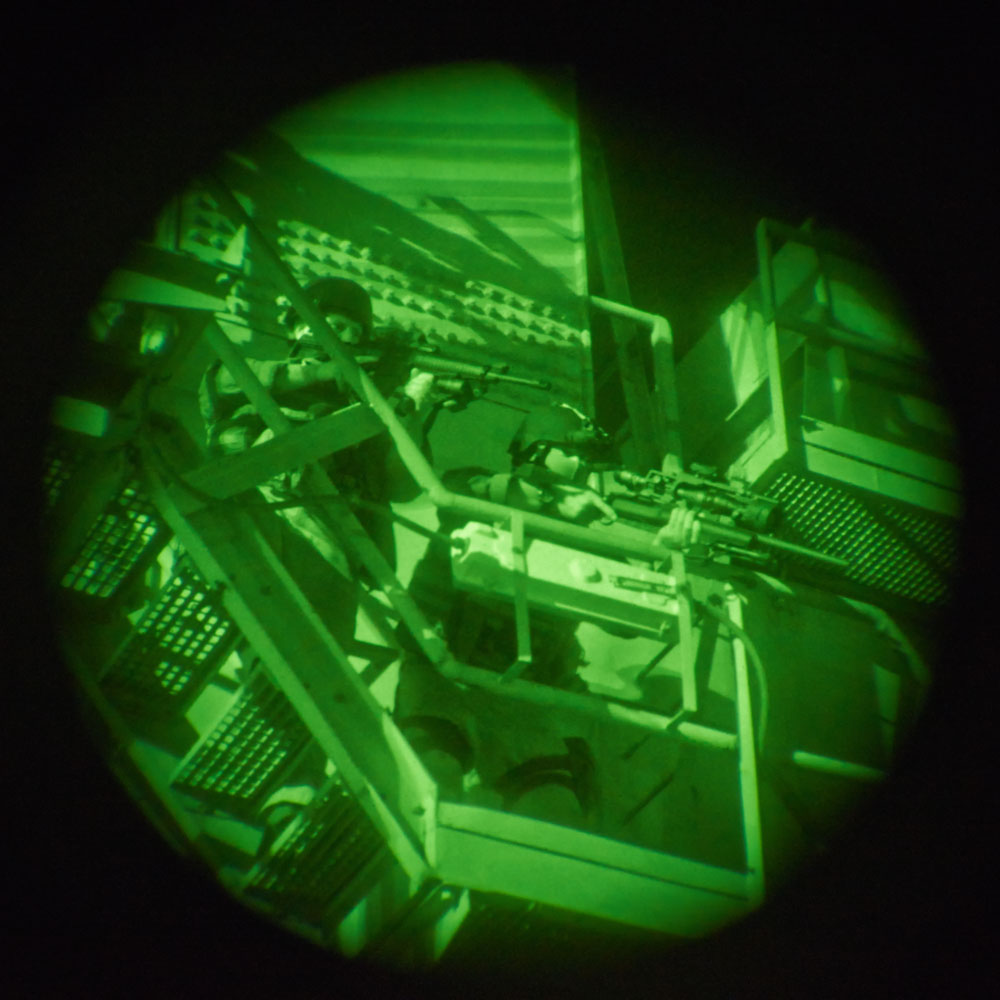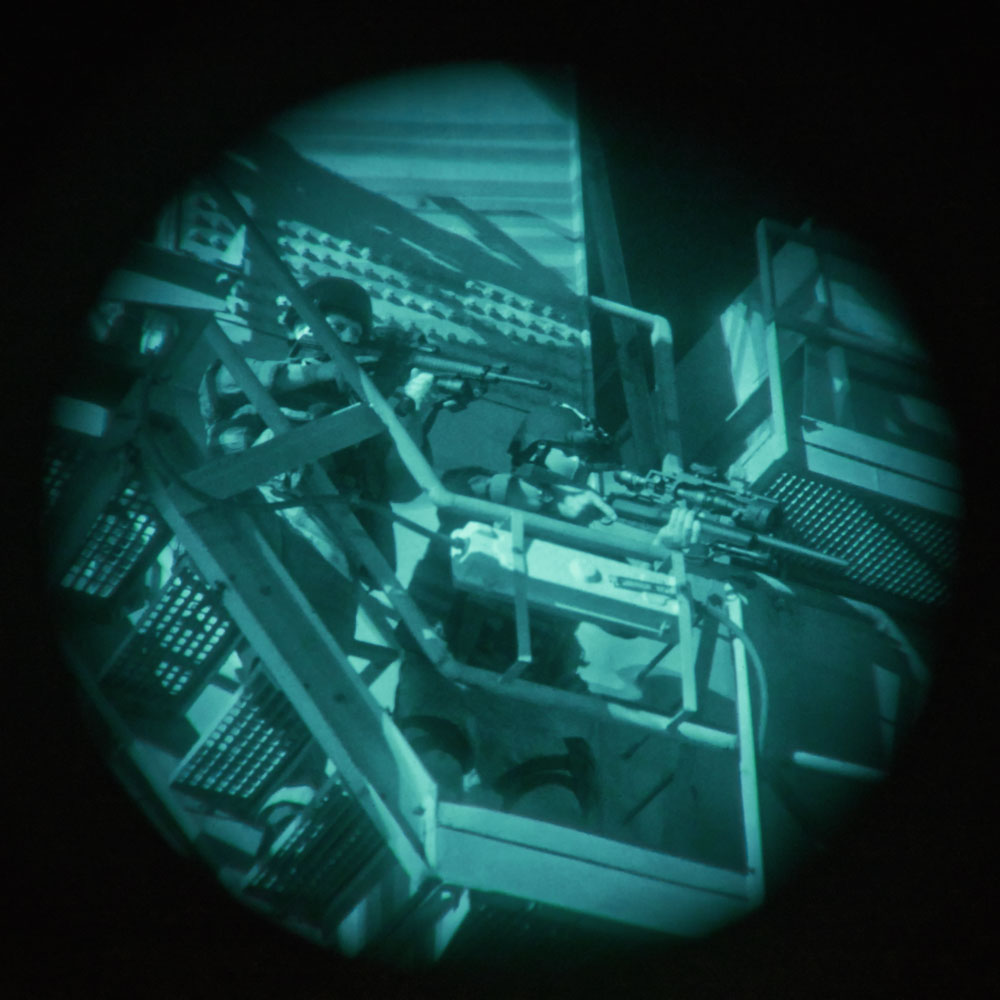IMAGE INTENSIFERS
With our expansive capabilities and strategic partnerships, we are able to custom build any of our NVD manufactured products with Image Intensifiers from either Elbit Systems of America®, Photonis®, or L3Harris®. This includes green and white phosphor and thin or un-filmed image tubes.



FOM (FIGURE OF MERIT)
The FOM, or Figure of Merit is a number calculated by multiplying the Signal-to-noise ratio by the resolution of an image intensifier. The FOM number allows a quick estimate of the general performance level of that image intensifier. Every order will come with spec sheet for the image intensifier tube that states that tube’s characteristics and its compliance with advertised specs.
GREEN VS. WHITE PHOSPHOR
There is no scientific evidence that one phosphor color is better than another. Everyones’ eyes are different and systems are used in diverse environments. It comes down to user preference.

GREEN PHOSPHOR
Traditional image intensifier tubes use a P-43 phosphor screen output, resulting in the yellow-green image that has become the signature view through most Gen III night vision technology. The human eye can see more shades of green than any other color and users have reported that their eyes adjust better back to the dark with green phosphor.

WHITE PHOSPHOR
The White Phosphor tube uses a P-45 phosphor screen, which yields an alternate coloration closer to black and white imagery. This change in color has been reported to enhance overall object recognition while providing contrast sensitivity equivalent to green phosphor. Users have reported that nighttime scenes show greater contrast and a brighter image with white phosphor. The white light causes less eye fatigue which is important for continuous use.
GREEN VS. WHITE PHOSPHOR
There is no scientific evidence that one phosphor color is better than another. Everyones’ eyes are different and systems are used in diverse environments. It comes down to user preference.

GREEN PHOSPHOR
Traditional image intensifier tubes use a P-43 phosphor screen output, resulting in the yellow-green image that has become the signature view through most Gen III night vision technology. The human eye can see more shades of green than any other color and users have reported that their eyes adjust better back to the dark with green phosphor.

WHITE PHOSPHOR
The White Phosphor tube uses a P-45 phosphor screen, which yields an alternate coloration closer to black and white imagery. This change in color has been reported to enhance overall object recognition while providing contrast sensitivity equivalent to green phosphor. Users have reported that nighttime scenes show greater contrast and a brighter image with white phosphor. The white light causes less eye fatigue which is important for continuous use.
GENERATIONS
Gen I: Developed in the 1960s, Gen I systems utilized the basic principles which will amplify the existing light several thousand times letting you clearly see in the dark. These Gen I systems provide a bright image, however they are not very clear or distinguishable. Gen I lifespan 1000 hours.
GENERATIONS
Gen I: Developed in the 1960s, Gen I systems utilized the basic principles which will amplify the existing light several thousand times letting you clearly see in the dark. These Gen I systems provide a bright image, however they are not very clear or distinguishable. Gen I lifespan 1000 hours.
